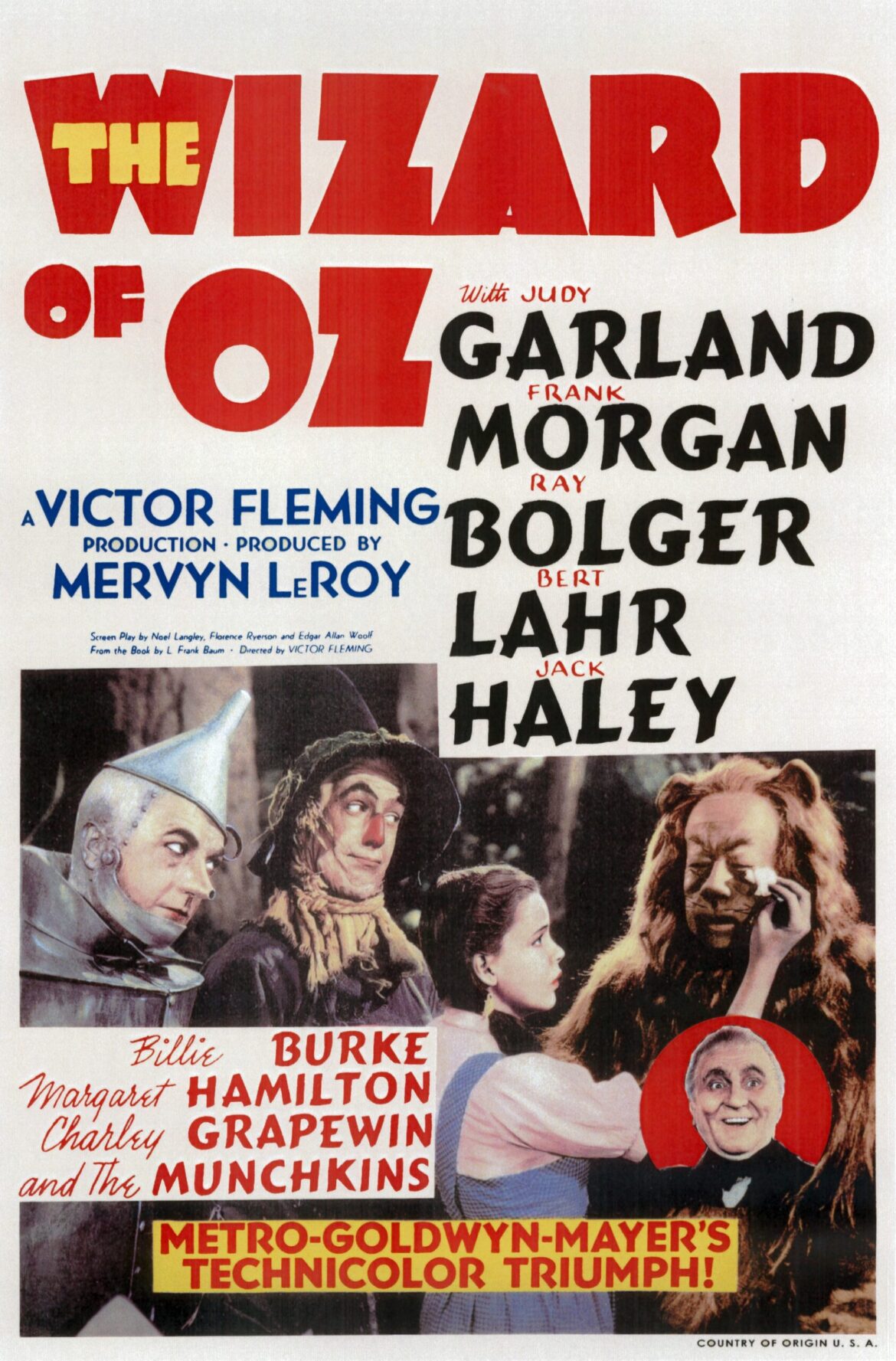The Wizard of Oz (1939) – A Timeless Journey Through the Land of Oz
Type: Movie
Country: USA
Genre: Fantasy, Musical, Family
Release Date: August 25, 1939
Duration: 102 minutes
Director: Victor Fleming (and George Cukor, Mervyn LeRoy, Norman Taurog uncredited)
Production Companies: Metro-Goldwyn-Mayer (MGM)
Cast: Judy Garland, Frank Morgan, Margaret Hamilton, Billie Burke, Ray Bolger, Jack Haley, Bert Lahr
Quick Review:
Victor Fleming’s “The Wizard of Oz” (1939) remains an enduring classic, celebrated for its enchanting storytelling, memorable characters, and groundbreaking use of color. Adapted from L. Frank Baum’s beloved novel, the film has captivated audiences for generations with its whimsical fantasy and timeless messages. Judy Garland’s performance as Dorothy Gale, combined with the film’s iconic musical numbers and imaginative set design, makes it a cherished part of cinema history.
Plot Summary:
“The Wizard of Oz” follows the story of Dorothy Gale (Judy Garland), a young girl from Kansas who is swept away to the magical Land of Oz by a cyclone. In Oz, Dorothy meets a colorful cast of characters, including the Scarecrow (Ray Bolger), the Tin Man (Jack Haley), and the Cowardly Lion (Bert Lahr), who join her on a quest to seek the help of the Wizard of Oz (Frank Morgan) in the Emerald City. Dorothy’s ultimate goal is to return home, but her journey teaches her valuable lessons about friendship, bravery, and the power of believing in oneself.
The film is renowned for its memorable scenes, such as the iconic yellow brick road, the Wicked Witch of the West (Margaret Hamilton), and the magical ruby slippers. As Dorothy and her friends face various challenges and confront their deepest fears, they discover that the true magic lies within themselves.
Characters and Performances:
- Judy Garland (Dorothy Gale): Garland’s portrayal of Dorothy is both heartwarming and iconic. Her performance captures the innocence and determination of the character, making Dorothy one of the most beloved figures in film history. Garland’s rendition of “Over the Rainbow” remains one of the most memorable songs in cinema.
- Frank Morgan (The Wizard of Oz): Morgan delivers a multifaceted performance as the Wizard, showcasing his range as he portrays multiple characters throughout the film. His portrayal of the Wizard adds a layer of mystery and charm to the story.
- Margaret Hamilton (The Wicked Witch of the West): Hamilton’s portrayal of the Wicked Witch is both menacing and memorable. Her performance provides a compelling antagonist to Dorothy’s journey, with her cackling laugh and green face becoming iconic symbols of cinematic villainy.
- Ray Bolger (The Scarecrow): Bolger’s Scarecrow is characterized by his endearing clumsiness and heartfelt desire for a brain. His energetic performance and engaging dance numbers contribute significantly to the film’s charm.
- Jack Haley (The Tin Man): Haley’s portrayal of the Tin Man is marked by his character’s longing for a heart. Haley’s performance adds emotional depth and warmth to the film, making the Tin Man a sympathetic and memorable character.
- Bert Lahr (The Cowardly Lion): Lahr’s Cowardly Lion brings humor and vulnerability to the film. His quest for courage is both humorous and touching, adding to the film’s emotional impact.
Direction and Cinematography:
Victor Fleming’s direction, combined with the work of uncredited directors George Cukor, Mervyn LeRoy, and Norman Taurog, creates a visually stunning and imaginative film. The transition from the sepia-toned Kansas to the vibrant Technicolor Land of Oz is one of the most celebrated aspects of the film. The cinematography by Harold Rosson captures the whimsy and grandeur of Oz, with its elaborate sets and colorful costumes contributing to the film’s timeless appeal.
Music:
The film’s score, composed by Harold Arlen and E.Y. Harburg, includes some of the most memorable songs in musical cinema. “Over the Rainbow,” performed by Judy Garland, is a standout number that encapsulates the film’s themes of hope and dreams. Other notable songs include “If I Only Had a Brain,” “We’re Off to See the Wizard,” and “Follow the Yellow Brick Road.” The music enhances the film’s emotional and narrative impact, making it an integral part of its enduring success.
Why It Endures:
“The Wizard of Oz” endures as a classic due to its universal themes, memorable characters, and groundbreaking use of color and special effects. The film’s exploration of courage, friendship, and self-discovery resonates with audiences of all ages. Its ability to transport viewers to a magical world while imparting valuable life lessons ensures its place as a beloved piece of cinematic history.
In Conclusion:
“The Wizard of Oz” (1939) remains a timeless classic that continues to captivate audiences with its enchanting story, memorable performances, and innovative use of technology. Directed by Victor Fleming and featuring a stellar cast led by Judy Garland, the film is a testament to the power of imagination and the enduring appeal of fairy tales. Its rich musical score and vibrant visuals make it a cherished favorite for generations to come.


